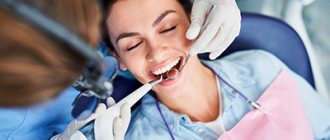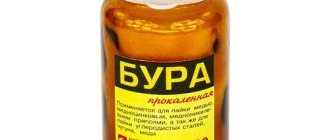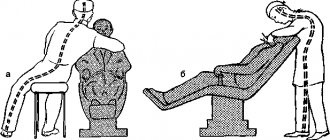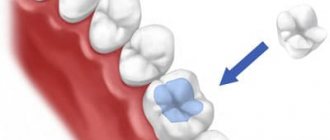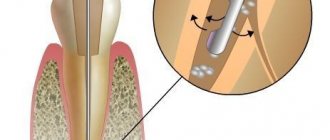All information is provided for informational purposes only and does not constitute medical advice. The system, methods, methods of treatment, necessary medications can only be prescribed by your attending physician.
Candidiasis is often called thrush and is one of the most common pathologies of the oral cavity. This disease is caused by the fungus Candida albicans.
Activation of the pathogen in the mouth occurs during a period of decreased local or general immunity. The result is increased proliferation of fungus on the cheeks, pharynx or tongue.
In addition to complex therapy prescribed by a specialist after examining the patient, following a diet for candidiasis in the oral cavity gives good results. It must be followed both during the treatment period and after its completion.
Refusal to use prohibited ingredients reduces the risk of exacerbation and helps establish positive dynamics of the pathological process. It also helps reduce the likelihood of relapse due to stress or a slight decrease in the functioning of the immune system.
A balanced diet using approved components provides a high chance of recovery even with a long and advanced pathological process.
Basics of nutrition for thrush
A diet for oral candidiasis, like any other diet, involves dividing all ingredients into two large categories:
- Allowed, which prevent the development of fungus in the mouth and stimulate local and general immunity.
- Prohibited. They create favorable conditions for the growth of the pathogen.
Eating only approved foods together with antifungal drugs enhances the effect of the prescribed course of treatment. It should be noted that the diet is very strict, but the result is noticeable just a few days after starting to follow it. The main goal of the diet is to activate the immune system, due to which the disease recedes much faster.
What is a disease
Stomatitis is considered a lesion of the oral mucosa.
The reasons for the development of this pathology are:
- infection by infections (viruses, bacteria, fungi);
- medicines;
- autoimmune processes.
Children develop painful ulcers in their mouths. They are quite deep, but heal without scarring. If the baby has immune disorders, then the ulcerative process is continuous. Previously formed ulcers simply do not have time to heal before new ones appear. The acute process becomes chronic. That is why it is important that nutrition for stomatitis is gentle, at the same time complete and varied.
Basics of a therapeutic diet
A balanced diet for candidiasis should include components such as:
- Low-fat varieties of fish and meat;
- Vegetables;
- Chicken eggs;
- Buckwheat.
- Products with antifungal effect.
Complex treatment is most effective with proper nutrition. These ingredients should form the basis of the diet. Experts attach great importance to the number of meals, as well as the temperature of the finished dish. The ideal solution would be to avoid salt and various seasonings.
They irritate the oral mucosa, creating a favorable environment for the growth of pathogenic microflora. Steamed or boiled foods are gentle on the oral cavity.
Prebiotics of natural origin
These components also help to cope with fungus in the oral cavity and increase the effectiveness of treatment. Prebiotics, according to experts, are complex polysaccharides that are not digested by enzymes.
As a result, they become excellent food for intestinal microflora and displace pathogenic microorganisms. Fructose-oligosaccharide is rightfully recognized as one of the most famous polysaccharides. Its maximum content was found in:
- Asparagus;
- Bananas;
- Onions and garlic;
- Jerusalem artichoke.
Introducing the above ingredients into your daily diet will reduce the risk of relapse and speed up the recovery process.
Candidiasis
Candidiasis
is an infection caused by the genus Candida. The genus Candida has about 200 species that are present in food, soil, plants, and some are part of the human microflora. Several types of fungi are clinically significant, but C. albicans and C. tropicalis play a leading role in the development of candidiasis in humans.
C. albicans colonizes mucous membranes during fetal development or during the first year of life. C. albicans is present in the body of every person. Candida helps control bacteria involved in the production of vitamin K and B12, and is also involved in the breakdown of sugars. Under certain circumstances: against the background of decreased immunity, stress, a long course of antibiotic therapy and hormone therapy (including oral contraceptives), poor nutrition, the number of colonies increases and candidiasis or yeast infection develops.
Candida infection most often affects the mucous membranes of the mouth, intestines or vagina.
Candidiasis causes a wide range of symptoms: from the mildest but common forms, which are usually found in the mouth and vagina, to rare and severe forms associated with damage to the endocardium, meninges and the development of septicemia.
In accordance with ICD-10, there are:
- Candidiasis of the vulva and vagina
- Candidal stomatitis
- Pulmonary candidiasis
- Candidiasis of the skin and nails (onychia and paronychia)
- Candidiasis of other urogenital localizations
- Candidal meningitis
- Candidal endocarditis
- Candidal septicemia
- Candidiasis of other localizations
- Candidiasis, unspecified
Vulvovaginitis or vaginitis.
Also known as thrush. The disease is characterized by thick white or yellow cheesy vaginal discharge. The discharge is accompanied by itching, burning, swelling and redness of the intimate area, and an unpleasant odor. Pain and discomfort during urination or sexual intercourse are less common. Pregnant women or women with diabetes are more susceptible to the disease.
Candidal stomatitis
. The disease is characterized by the presence of ulcerative lesions and the accumulation of whitish cheesy deposits on the tongue and on the inner surface of the cheeks. The ulcers may be painful and bleed when they are scratched. Sometimes oral thrush can spread to the mouth, gums, tonsils, or the back of the throat. Candidal stomatitis can appear at any age, but is especially common in children.
Skin candidiasis
. The skin is a favorite place for the proliferation of fungi, especially in skin folds: armpits, inguinal and buttock folds, membranes between the fingers. The lesions appear as small nodules, itchy spots and reddish blisters. More often the disease develops in newborns.
Candidiasis infection of the nails (onychia) and surrounding area (paronychia)
. This form of candidiasis first manifests itself as painful swelling, which is later accompanied by the formation of pus. The infection often develops under the nail, leading to loss of the nail plate.
In addition to the main noticeable symptoms, such as thrush and a white coating on the tongue, candida has the following manifestations: craving for sweets, irritability, apathy, memory impairment, inability to concentrate and pay attention, poor sleep, mood swings, constipation, flatulence, constant feeling of fatigue .
At-risk groups
Risk groups for candidiasis include the following categories:
- children;
- overweight people;
- people diagnosed with diabetes mellitus;
- people with an underactive thyroid gland (hypothyroidism);
- people with inflammatory diseases;
- people with a weakened immune system (immunodeficiency);
- people working in wet conditions;
- pregnant women.
Protective barriers within the body
In the pathogenesis of the development of candidiasis, disturbances in the functioning of the digestive organs play an important role. There are three barriers inside the body: mechanical, physicochemical and immunobiological, which prevent the colonization of mucous membranes and skin by pathogenic microorganisms, and also cause a direct antifungal effect against candida.
The production of secretory immunoglobulin A (IgA) by the mucous membranes of the oral cavity and intestines is an immunological barrier that protects the mucous membranes from colonization by Candida fungi.
Antibacterial enzymes such as lysozyme, mucin, lactoferrin, peroxidase, found in saliva, are the first lines of defense. Long-term presence of food in the oral cavity, as well as the absence of washing it down with water or other drinks, increases the protective effect of saliva components and reduces the load on other parts of the gastrointestinal tract. The aggressive acidic environment of the stomach is the next factor of nonspecific protection. Digestion in the duodenum, the work of which equally depends on the activity of the pancreas and liver, contributes to the proper digestion of carbohydrates, fats and proteins of food and their better absorption in the small intestine. The intestine is the last authority regulating the flow of food components into the bloodstream, therefore its function, including the barrier function, will depend on the state of the enterocytes, the quality of mucin-like mucus and the presence of symbiotic flora. Treatment of candida first begins with restoring intestinal function.
The spread of candida is the result, on the one hand, of a violation of the barrier functions of the gastrointestinal tract, and on the other, the creation by the person himself of favorable conditions for the proliferation of yeast. These primarily include nutrition. One of the key factors on which 80% of the effect in the treatment of candidiasis depends is nutritional adjustments.
Nutrition
List of foods that contribute to the proliferation of candida:
- sugar and sugar-containing products;
- simple carbohydrates (baked goods, jam, preserves, carbonated drinks, ice cream);
- vegetables with a high glycemic index (potatoes);
- gluten-containing cereals;
- alcohol, caffeine.
List of products that will improve the condition of candidiasis:
- fermented foods;
- coconut oil, milk and pulp;
- ginger;
- herbal teas;
- unsweetened berries (cranberries, lingonberries);
- chia seeds, flax seeds.
Tests for candidiasis
There are several ways to detect candida directly on visible mucous membranes. To do this, a PCR study is carried out or a culture test is performed. In both cases, the subject of the study is a smear taken from the site of the lesion. Both methods determine the presence of the main culprits of the problem: fungi of the genus Candida based on the determination of DNA in the sample or the growth of a colony of fungi on a nutrient medium.
The microbiocenosis of the small intestine can be assessed using gas chromatography-mass spectrometry. The results of the analysis allow us to draw a conclusion about the state of the intestinal parietal microflora and identify which communities of microorganisms are in imbalance. The material for the study is whole venous blood.
Analysis of stool for dysbacteriosis will help to draw a conclusion about the state of the luminal microflora of the large intestine. The presence of E. coli, Klebsiella, Candida, and some types of staphylococci indicates candidiasis.
Probiotics for oral candidiasis
Is it possible to consume dairy products if you have thrush? If you follow the recommendations of experts, then yes! The goal of a therapeutic diet is to displace pathogenic microflora and gradually replace it with beneficial microorganisms.
Live yogurt and kefir are recognized as ideal sources of prebiotics. They also have a beneficial effect on the process of normalizing intestinal microflora and improve the digestion process.
Bifidobacteria and acidophilus, which are part of fermented baked milk, have a negative effect on Candida albicans. The use of fermented baked milk as a means of treatment and prevention is very effective. But such a diet should be used with caution in patients with a history of liver disease.
A high content of dairy products in the diet increases the load on the liver and can cause deterioration of the condition. Consultation with a nutritionist and therapist will help you choose their optimal amount in a person’s diet.
What not to eat if you have thrush
Following your doctor’s recommendations for a healthy and nutritious diet and comprehensive treatment for oral candidiasis is the key to a speedy recovery. But there is a list of ingredients that must be excluded from your diet.
It is important to carefully ensure that they do not end up on the menu either raw or as part of any complex dishes.
So, you will have to stop using:
- Black tea. There is a possibility of the formation of invisible mold, which will have a detrimental effect on the patient’s health.
- Mushrooms of both forest and industrial origin.
- Buttermilk and sour cream. The only exception is fresh sour cream with a small percentage of fat.
- Mayonnaise, cheese.
- Dried fruits, since their surface may contain tiny mold.
- Drinks obtained on the basis of fermentation. This category includes strong alcohol, wine, beer, cider, kvass, mead, etc.
- Sprouted grains.
- Dishes containing monosodium glutamate. These are ketchups, ready-made wet condiments and soups, various dressings, all types of fast food.
- Vinegar. The only exception is apple.
- Medicines made from yeast. These are antibiotics, vitamin-mineral complexes, etc.
- Products containing refined white flour. This category of dishes includes sweet pastries, buns, cookies, pasta, muesli, etc.
- The ideal solution would be to replace animal fats with plant analogues.
- Sausages, fatty meats, various corned beef.
During the period of exacerbation of the disease, experts recommend excluding these dishes from the diet. Only after complete recovery and completion of the course of treatment should it be gradually introduced, observing the condition of the body. At the first alarming symptoms, it is necessary to contact a specialist in order to adjust the existing diet and continue treatment.
Carbohydrates are prohibited
A strict no-carbohydrate diet has worked well. It involves complete abstinence from foods such as:
- Sugar. It is important to exclude any form of it (honey, sand, condensed milk, refined sugar, syrups, etc.).
- All types of sweeteners (fructose, maltose, glucose, sorbitol).
- Any candy, as well as all types of chocolate.
- Sweet carbonated drinks, as well as packaged and bottled juices.
- Fruits and berries with a high sugar content (watermelon, raspberries, strawberries, bananas, grapes, melons, apples, etc.).
- Dairy products and milk. The only exceptions are fermented baked milk, live yogurt and fresh kefir.
- Vegetables with a high starch content. Potatoes and legumes can be consumed only a couple of times a week in the absence of alarming symptoms and persistent positive dynamics of the pathological process.
A no-carbohydrate diet requires some effort from a person. But after a few days the patient notices an improvement in his condition. By continuing treatment and adhering to the same meal plan, it is possible to obtain lasting positive dynamics.
Menu for oral candidiasis
Fungal diseases require a balanced diet. A proper diet includes a variety of foods. A strict diet does not mean eating just a few ingredients. If desired, you can develop a full menu for every taste. Let's consider possible food options for breakfast, lunch and dinner.
Breakfast for thrush
- Fresh cucumber salad, scrambled eggs, unsweetened green tea and whole grain bread;
- Sour cream and cottage cheese with a small percentage of fat, apple-carrot or carrot juice;
- Freshly squeezed orange juice, omelette;
- Tomato and herb salad, boiled eggs;
- Not sweet green tea and fruit salad in small quantities;
- Assorted nuts and oatmeal without sugar;
- Boiled fish or lean meat;
- Brown rice with boiled fish.
The main thing is to carefully monitor the absence of simple carbohydrates, and also avoid excessive consumption of dairy products.
Afternoon snack or snack
Meals for thrush should be fractional and as healthy as possible. Therefore, experts have developed several healthy snack options that can satisfy hunger and free a person from the desire to eat prohibited foods.
So, what can you snack on during the day:
- Green apple. It can be baked, steamed or fresh.
- A small handful of nuts.
- Live yogurt or kefir.
- Whole grain bread in small quantities, as well as homemade cheese.
- Orange or orange juice.
- Apple with low-fat cottage cheese.
Using the above products to satisfy hunger between main meals, the patient not only follows a diet, but also provides the body with necessary vitamins and minerals. This diet helps to activate the immune system and speed up the healing process.
Dinner
Among the allowed foods for oral thrush, experts include:
- Vegetable soups;
- Casseroles from lean meats;
- Boiled chicken breast and carrot salad;
- Tomato soup;
- Lean fish casserole;
- Pea soup;
- Buckwheat porridge or soup;
- Boiled or steamed vegetables;
- Lentil soup;
- Boiled meat;
- Steam cutlets;
- Beetroot;
- Chicken soup;
- Seafood.
Eating properly selected meals provides a complete diet, and split meals normalize metabolism and promote recovery.
An integrated approach to the treatment of patients with candidiasis of the digestive tract
Candida fungi are opportunistic microorganisms that normally populate the digestive tract, participate in the process of fermentation, food digestion, etc. This phenomenon, called colonization, is clinically asymptomatic. A study of adult healthy volunteers showed that Candida albicans was present in their oropharyngeal zone in 20–30%, in the small intestine – in 50–54%, in the large intestine – in 55–70%, in feces – in 65–70% of cases .
So, with physiological well-being, there is a certain balance between macro- and microorganisms, in which, on the one hand, factors of the body’s resistance to microscopic fungi play a role, on the other, factors of the pathogenicity of fungi. The body's resistance depends on belonging to risk groups and the competence of its immune system. For protection, macrophage and neutrophil phagocytosis is also important, preventing the dissemination of fungal, especially candidiasis, infection.
According to most researchers, the asymptomatic presence of fungi in the gastrointestinal tract (GIT) can cease when they acquire pathogenic properties, and the patient’s immune system fails.
The most common mycoses of the digestive tract are esophageal candidiasis and intestinal candidiasis, which occur both in immunocompetent and (much more often) in immunosuppressed individuals. Primary mycoses of the stomach, including candidiasis, are rarely diagnosed, which is associated with the physiological acidic environment of the stomach, where fungal cells die.
Risk factors for the development of candidiasis of the esophagus and intestines are:
1. Gastrointestinal diseases:
- diseases of the mucous membranes of the oral cavity;
- gastroesophageal reflux disease;
- stomach contamination with Helicobacter pylori;
- atrophic gastritis, gastric hypoacidity, achalasia, bulbitis;
- erosive and ulcerative diseases of the esophagus and intestines;
- mixed intestinal infection, dysbiosis;
- diverticulosis, polyposis;
- enterocolitis, Crohn's disease, irritable bowel syndrome, etc.
2. Other diseases:
- oncological;
- hematological;
- endocrinological;
- allergic;
- AIDS and HIV infection.
3. Injury to the gastrointestinal mucosa:
- esophagogastric tube;
- burns of the esophagus;
- surgical interventions.
4. Taking medications:
- antibiotics;
- cytostatics;
- hormones and other chemotherapy drugs.
Malnutrition, fasting, alcoholism, smoking, drug addiction contribute to the development of candidiasis. Risk factors also include old age, when the immune system ages, numerous somatic diseases occur, the amplitude of longitudinal contractions of the esophagus and the strength of sphincter contractions decrease, absorption processes are disrupted, etc.
Clinically, candidiasis of the digestive tract is divided into:
- oropharyngeal candidiasis (pseudomembranous, atrophic, erythromatous, rhomboid glossitis, angular cheilitis);
- candidal esophagitis (erosive and without erosion);
- gastric candidiasis (erosive-fibrinous and secondary to peptic ulcer);
- intestinal candidiasis (pseudomembranous, collagenous, lymphocytic);
- candidal proctosigmoiditis;
- perianal candidiasis;
- secretory diarrhea associated with candidiasis.
Candidal esophagitis in general hospitals occurs in 1.3–2.8% of patients, in transplant departments - up to 4%, with disseminated carcinomatosis - from 2.8 to 6.7%. This disease often occurs without subjective complaints and is detected incidentally in population studies in 1–7% of cases. Sometimes patients note pain and discomfort when passing solid and liquid food, dysphagia, and hypersalivation. According to the depth of the lesion, 4 types are endoscopically distinguished: from mild edema, hyperemia, single white plaques <1 mm in diameter to massive inflammation, deformation and bleeding of the mucosa, ulceration, even perforation.
Gastric candidiasis, as a rule, develops secondary to peptic ulcer and gastroesophageal reflux disease. Achlorhydria, in turn, promotes the colonization of fungi on the mucous membrane with subsequent invasion, especially in defect areas (ulcers, erosion), which slows down repair (healing), pain syndrome appears, and sometimes bleeding of the ulcer.
Candidiasis of the intestine usually manifests itself as abdominal discomfort, diarrhea, bloating, pain and other symptoms. The study of intestinal microbiocenosis makes it possible to specify amorphous “enterocolitis”, namely: to differentiate pseudomembranous colitis caused by Clostridium difficile, an acute process in the intestine caused by rotoviruses and Escherichia coli, Crohn’s disease, irritable bowel syndrome from candidiasis or dysbiosis with a predominant candidal component.
In most cases, fungal infections of the gastrointestinal tract are accompanied by changes in microbiocenosis and a decrease in the body's colonization resistance. To treat gastrointestinal candidiasis, a wide variety of antimycotics, both systemic and local, are used. Also, one of the goals of therapy is to create conditions for the growth and functioning of normal microflora.
In modern scientific literature, drugs for the correction of dysbiosis are divided into 3 main groups: probiotics - contain viable microorganisms; prebiotics – contain microflora growth stimulants; synbiotics – contain live microorganisms and prebiotics. There are probiotic complexes, which are a combination of the above components, as well as sorbents, vitamins and microelements. There are a lot of means for correcting intestinal microflora disorders, and new options and varieties are constantly appearing.
A further development of traditional probiotics are natural metabiotics. The terms "metabiotics", "metabolic probiotics", "postbiotics", "biological drugs" or "pharmacobiotics" are used to refer to small molecules that are structural components of probiotic (symbiotic) microorganisms and/or their metabolites, and/or signaling molecules with a specific (known) chemical structure that are capable of influencing the microbiome and/or metabolic and signaling pathways in humans. One of the representatives of metabiotics is Baktistatin.
The Baktistatin complex includes natural components that complement each other: sorbent, probiotic, prebiotic. One of the advantages of the Baktistatin complex is the absence of live bacteria foreign to the human gastrointestinal tract, the long-term presence of which in large quantities is undesirable. Instead of living bacteria, the Baktistatin complex includes products of their vital activity - active metabolites. Therefore, Baktistatin begins to work immediately, and its action is aimed at restoring one’s own normal microflora, which is unique to each person.
We conducted a study to evaluate the effectiveness and safety of the probiotic complex Baktistatin in treatment regimens for patients with candidal esophagitis and enterocolitis.
The study assessed the effectiveness and safety of 2 treatment regimens for esophageal and intestinal candidiasis in 2 groups: Group 1 – control, in which patients received etiotropic antifungal therapy; 2nd – the main group of patients in whom the Bactistatin complex is included in the above-mentioned therapy regimen.
In both groups of patients, selective decontamination with modern effective antifungal drugs of targeted action was carried out for 7–14 days. Patients in the main group additionally received Baktistatin, 2 capsules 2 times a day for 20 days.
To study clinical, endoscopic and laboratory indicators over time during the treatment of patients with candidal esophagitis and enterocolitis, a special questionnaire was developed, including a physical examination, gastroscopy, colonoscopy, and bacteriological examination of stool.
The results of comparing the scores of clinical symptoms showed that while taking the Baktistatin complex, manifestations of candidiasis of the esophagus and intestines went away faster. Thus, before treatment, the overall score for the severity of symptoms of candidal esophagitis was 355; after treatment, this figure decreased to 123 in the control group and to 60 in patients of the main group taking Bactistatin (Fig. 1). With regard to candidal enterocolitis, before treatment the total symptom severity score was 645, after treatment - 317 in the control group and 120 in the main group (Fig. 2).
In addition, the use of the Baktistatin complex in the treatment of gastrointestinal candidiasis significantly influenced the restoration of colon microbiocenosis due to an increase in the number of bifidobacteria and lactobacilli and a decrease in the number of enterobacteria, non-fermenting bacteria and fungi.
The data obtained indicate that the use of the metabiotic Baktistatin allows one to avoid the side effects of systemic antimycotics on the intestinal microflora and improve the condition of the esophagus and intestines in a short time due to a more pronounced reduction in the severity of the disease.
Thus, the use of the Baktistatin complex in treatment regimens for fungal infections of the gastrointestinal tract helps to quickly create conditions for the growth and functioning of normal microflora and reduce the side effects of systemic antimycotics.

